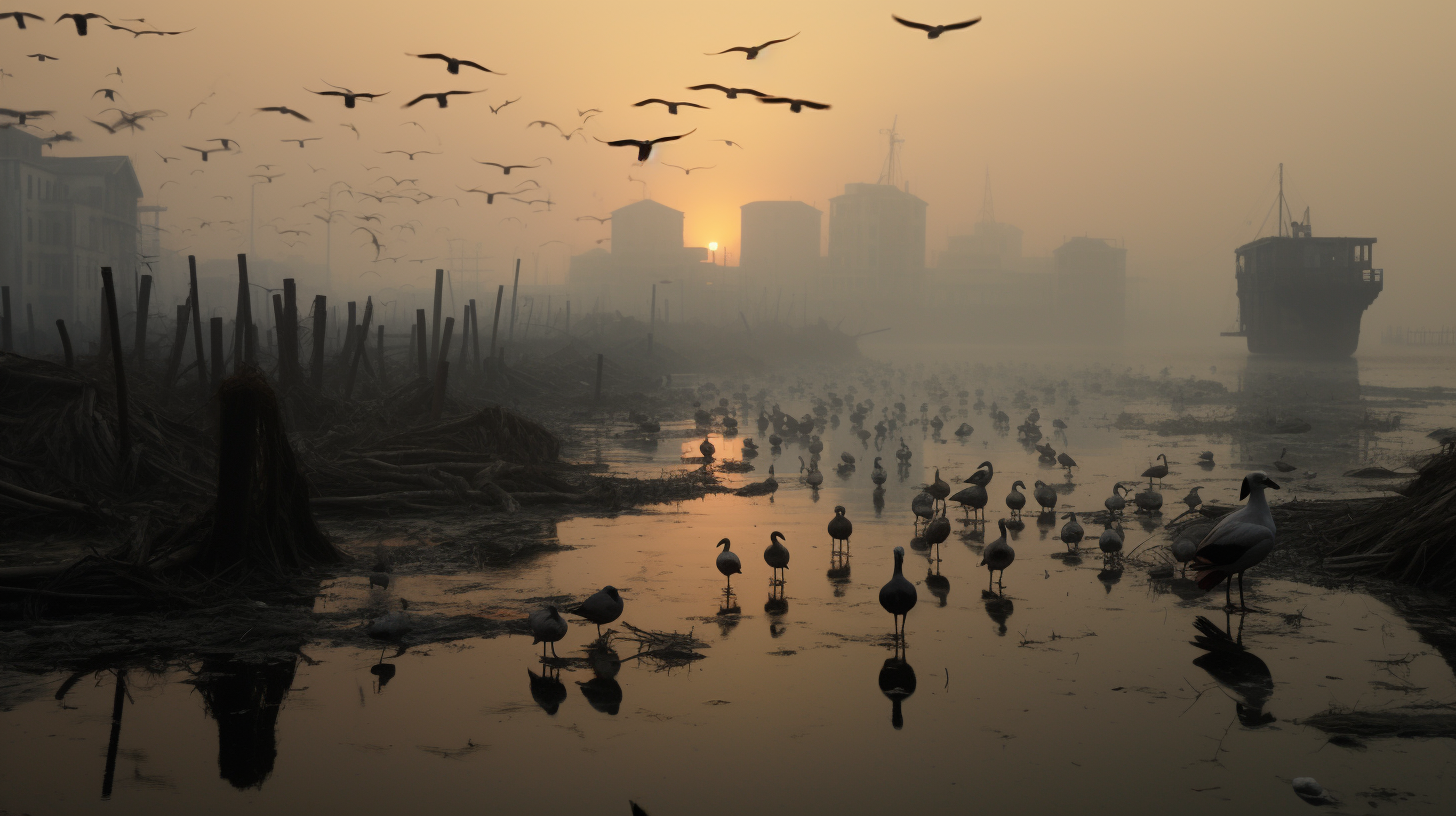In the suffocating embrace of our urban sprawls, where once thrived the cacophonous choir of avian life, there now rests an uneasy silence. The Quiet Exodus is not a tale of spectacular migrations to distant wintering grounds, but a chronicling of absence, of the winged denizens that have abandoned the cities, leaving behind a void echoed in the skyscrapers and empty parks. This is a narrative of migration in reverse—a flight not marked by the wingbeats against the sky, but by the silhouettes that no longer cast shadows upon our concrete jungles.
Previous examinations into the plight of our feathered cohabitants have unmasked the ‘Silent Skies’ overhead and the extraordinary ‘Avian Adaptations in Climate Havens’; however, this present account delves deeper into the phenomena, parsing through the stark reality of the places birds no longer grace with their ephemeral presence.
Ornithologists have long heralded cities as unexpected sanctuaries, places where innovative birds altered the very fabric of their being to coexist amidst the din and dross. Yet even adaptability has its limits. The quiet exodus is silent testimony to the thresholds crossed, the invisible lines etched into the ecosphere where the balance tipped from manageable to uninhabitable. We’ve traced their dwindling numbers, their stilled songs, and labored flights, but now we face the hollow aftermath where they once thrived in defiance of our urban sprawl.
Consider the common sparrow, once a ubiquitous symbol of urban wildlife. Their decline has been so gradual, so unpretentious, that their absence rings as a shock to those who notice. Rural expanse turned impervious plain, synthetic light suppressing natural rhythms, pollutants and pesticides weaving into their tenuous existence, the cause is not a singular villain but a multitude of incremental encroachments.
What stands out as a distressing pattern across migrating species is the loss of stopover habitats. Key landmarks in their aerial odyssey, these resting spots are equally as vital as their final destinations. And they too are vanishing, suffocated by concrete and commerce. Removed are the marshlands and small woods, the local parks and tree-lines avenues—stripped or transformed beyond the ken of those who depended on them for respite.
The effects of this quiet exodus ripple outwards. The Cerulean Warbler, a once common sight in city outskirts, is now a whisper, an idea, a disappearing shade of blue against the dimming sky. Its departure is not just the loss of a species; it is symptomatic of a deeper contagion that affects insects, plants, and the mesh of life that sustained its ephemeral dance.
Yet, in this somber tableau, there flickers the ironic contrast of human adaptation parallel to avian displacement. We erect our climes-controlled edifices, install green roofs, and bio-walls in attempts to imitate the nature we’ve razed. Still, the birds are not deceived. These facsimiles of ecological niches offer no solace for disrupted migratory patterns or the absence of seasonal cues long ingrained in winged instinct.
As winters warm and summers stretch, the timing of lifts-off and touchdowns grows increasingly erratic. The discrepancy between biological clocks and shifting climates is yet another pothole in the migratory road, leading to mismatches in food availability and breeding cycles—a dissonance of life’s symphony.
But what of the future? What solace can we find in the paintings of past ornithic diversity, knowing they are but captured moments of a fading world? This quiet exodus begs not silence from our part, but an outcry, a call to acknowledge the absence of calls, to mend the fracturing sky beneath which we all reside.
Is this the inevitable denouement of our civilizational arc—a trajectory toward silent, barren heavens? Or might there flicker within us the spark to rewrite this tale, to compose an anthem in place of an elegy? This, dear reader, is no mere rhetorical musing but a plea dressed in narrative; as our feathered kin fade into the annals of memory, do we phantom their flight, or do we, too, seek the exodus?
